Women's integrity and loyalty are respected.
According to Thieu Chuu's Sino-Vietnamese dictionary (Culture and Information Publishing House, Hanoi ), a female martyr is a "strong woman who dies for her chastity and refuses to be humiliated". In the Sino-Vietnamese dictionary, Dao Duy Anh defines a female martyr as "a steadfast woman who refuses to be humbled". This concept is also very popular in China. In feudal society, a woman who refuses to remarry or refuses to be humiliated and commits suicide is called a female martyr. According to Doctor of Literature and cultural researcher Pham Van Hung, University of Social Sciences and Humanities, Vietnam National University, Hanoi, "the patriarchal social model is a common phenomenon, so women dying to protect their chastity, to show their submission to men's power or to show their loyalty".
In the country's history books, "heroic women" were recorded since 1044 under the name My Ê. By the Later Le Dynasty, praising and honoring chastity and righteousness was no longer as reserved as before but became more popular. In Dai Viet Su Ky Toan Thu, volume 2, Ngo Si Lien said: "In March 1437, the Le Dynasty "posted a plaque praising heroic women Le Thi... named Lien, from Phuc Lam village, Quoc Oai Trung road, the wife of Tuc Ve Luong Thien Tich of the Ho Dynasty, beautiful, widowed early, had no children, worshiped her husband's family, and worshiped her husband until his death".
Following that, the events of the Later Le Dynasty in honoring and educating the people about the image of beautiful, virtuous women, such as praising the chaste wife of Nguyen Van Dieu in 1456; issuing the Proclamation of the People's Law to the whole country in 1461; issuing a rank for the chaste wife Nguyen Thi Bo in Dai Huu Le commune, Thanh Tri district in 1463; urging the modification of folk customs in 1465; "sending envoys to districts in the country to praise chaste people" in 1498;
The law also had strict regulations on marriage. In 1499, the Le Dynasty issued a 24-article Law, including some articles related to men, women, and marriage. Also in the same year, in August, King Le Hien Tong issued an edict requesting that from the princes to the people "not take women from Champa as wives, so that customs can be pure" (according to Dai Viet Su Ky Toan Thu).
"Saigon Girl" by photographer John Thomson, one of the first photos taken in Vietnam, around 1867 - 1868. |
During this period, there were many political turmoils in the Later Le Dynasty, then Quang Trung marched to the North... there were many touching stories about loyal women. Phan Thi Thuan (from Can Loc, Ha Tinh) was the third wife of General Ngo Canh Hoan, who died following her husband on the Thuy Ai River in 1786. Her life was closely linked to the turbulent historical period at the end of the Le - Trinh Dynasty. Her example of sacrifice following her husband was honored by the Nguyen Dynasty through the stele "Le Trieu Tiet Liet Phu Nhan Phan Thi Chi Tu" which became a cultural - historical heritage.
In Dai Nam liet truyen, there is a story about Phan Thi Trang, a native of La Son district, Nghe An town. At the age of 17, her parents agreed to marry her, but before the wedding, her husband drowned. She heard the news and told her parents to return home to mourn. When she was in mourning, she wore a hemp shirt for 3 years, and did not go to the market. After the mourning period, someone proposed to her, but her mother-in-law advised her to remarry. She did not listen, so she established her husband's nephew as her successor. After her mother-in-law died, she had a funeral according to the ceremony, and kept her chastity for 37 years, and everyone praised her. In the 8th year of Minh Mang, a plaque was erected at the gate, which read "chastity is worthy of being an example".
Or the story of Truong Thi Van in Nam Dinh. At the age of 20, she married Vu Chieu, gave birth to a son, and after 3 years, her husband died. There was a tyrant who liked Van's beauty and wanted to force her to marry him. She swore not to remarry, and used a knife to cut her face, but the tyrant could not take her. King Minh Mang praised her on the sea of merits...
Nguyen Dynasty honors female martyrs
Dr. Pham Van Hung added that under the Nguyen Dynasty, the system of characters related to the issue of chastity (virgins, chaste women, and virtuous women) was often referred to as "virgin women" and it seemed that only the titles "virgin women who committed suicide" and "virgin women" were specifically regulated in the Le nam thuong thuong tho dan, tho quan, nghia phu, chaste women, virgins, filial sons, and righteous sons... revised in 1866.
“Tiết phụ quy sinh” is a term used to refer to a woman who, after her husband dies (regardless of whether she has children or not), commits suicide (such as hanging herself, jumping into a river, or a well) to preserve her chastity, with enough of her husband's family and the village chief to testify clearly, and the local authorities carefully investigate the exact situation, and reward her with a plaque and a separate house.
"Virgin", an unmarried girl, determined to keep her chastity, refusing to let a violent person defile her, with injuries as evidence, regardless of death or not, will be awarded a plaque, and the state will build her a private house.
During the Minh Mang period, the Nguyen Dynasty paid special attention to honoring women. Many female heroes were praised for their bravery and chastity. The Nguyen Dynasty assigned the Ministry of Rites to reward those who lived long and were chaste.
Photograph of a young woman of the wealthy class, wearing a large conical hat made of leaves (Ba Tam hat), Northern Vietnam, 1915. (Original color photo by Léon Busy) |
During the reign of Tu Duc, in 1848, Dai Nam Thuc Luc stated that the court began to set a time limit for women who remained chaste: "Only chaste women under 25 years old, who were widowed early and remained chaste, could be included in the list to be submitted; those from 26 years old and above were not allowed to be included in the list to be submitted, in order to have a rule". In 1856, the court made stricter regulations, stating that "from now on, only widows who are 55 years old and above can be submitted". Later, there was also a ranking of "excellent, average and second" for people famous for their chastity. In 1891, Dai Nam Dong Van Daily Newspaper was born. King Thanh Thai ordered the newspaper to publish stories of filial children, virtuous grandchildren, righteous husbands, chaste women, famous scholars, and righteous men. In Dai Nam Thuc Luc, from the event of praising Nguyen Thi Kim (1804) to the end of Dai Nam Thuc Luc - Chinh Bien De 7th period (1925), within 120 years, the Nguyen Dynasty had praised 310 chaste women and heroic women. The most prominent were during the reigns of King Minh Mang and Tu Duc.
The Nguyen Dynasty also knew how to honor female martyrs to affirm the cultural values of their era. Pham Dinh Ho once lamented a lot about the cultural decline of the late Le Dynasty in his book Vu Trung Tuy But, then under Tu Duc, the king wrote a poem to honor Nguyen Thi Kim (Luong Tai, Bac Ninh), the first female martyr under the Nguyen Dynasty to counterbalance the Qing Dynasty: "One day, she went on a hunger strike and committed suicide/Her name will be recorded in history for thousands of years/How great is the emperor's legacy of culture/The Qing Dynasty's martial arts cannot compare" (Tu Duc's Poetry and Literature - Thuan Hoa Publishing House).
In the Royal Annals of Vietnam, Tu Duc wrote 5 poems about heroic women, praising My E, Chau Thi, Phan Thi Thuan and Nguyen Thi Kim alone, 2 poems. Nguyen Thi Kim committed suicide by drinking poison, but Tu Duc wrote it as "hunger strike" (refusing to eat). He wanted to build a beautiful image of heroic women, affirming the cultural superiority of the Nguyen Dynasty compared to the Qing Dynasty.
Later, when interacting with Western culture, the Nguyen Dynasty had a more flexible view of chaste women, preserving virtue, such as granting “fields to encourage chastity”. The court also clearly stated the duties of the Department of Nursing and the Nursing House to take care of the lives of officials, widows, and widows “not to let them wander” or “not to let them lose their favor”. When the Westernization movement came, many folklore researchers such as Phan Ke Binh, Phan Khoi… believed that praising chastity was a cruel custom that was no longer appropriate. But that is another story, to be discussed later.
"Guong Liet Nu" was composed by musician Lam Phuong in 1997 but never published. In 2017, musician Lam Phuong assigned Ben Thanh Audio Video 10 new works, including the song "Guong Liet Nu". The song was licensed for distribution by the Department of Performing Arts in 2018.
"Guong Liet Nu" is like an ancient story told through music, imbued with classical colors. The first part of the song has a lyrical, profound melody, telling the story of To Thi "even though her body turned to stone, she still longed for her husband to return". The second part of the work has a heroic melody, praising the example of Hai Ba Trung "with rosy cheeks no less talented than her husband, in addition to taking care of the house, she fought with her husband far away, protecting every inch of our village's land...".
The MV "Gương Liệt Nữ" was released on Youtube, Spotify... performed by singer Duyên Quỳnh, Champion of the 2019 Love Storyteller contest. She is currently a singer at the Ho Chi Minh City Ballet Symphony Orchestra and Opera.
Tuan Ngoc
Source: https://baophapluat.vn/liet-nu-trong-lich-su-post550331.html


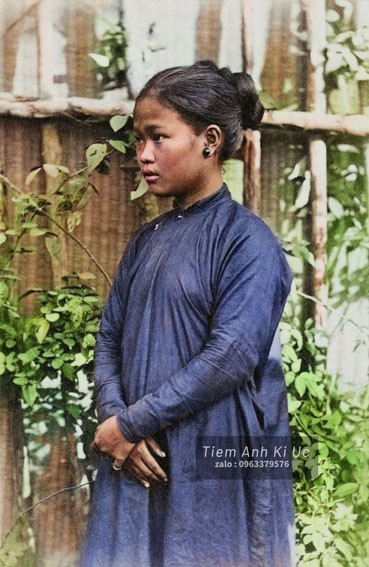
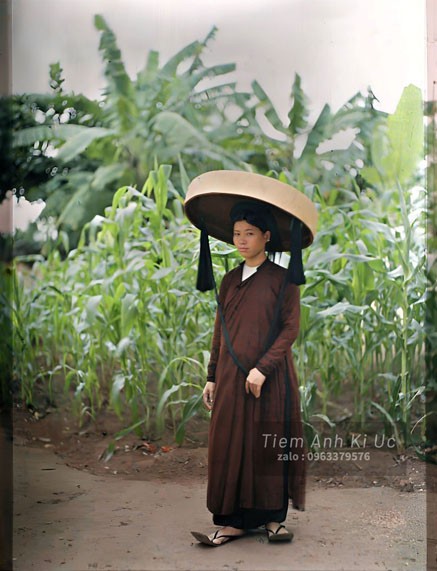






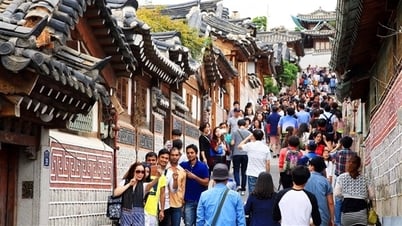


















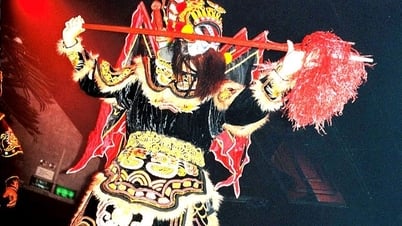


















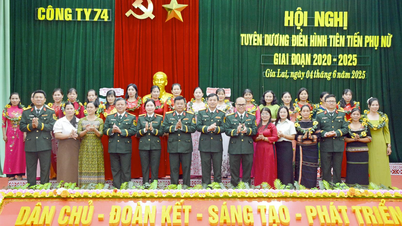















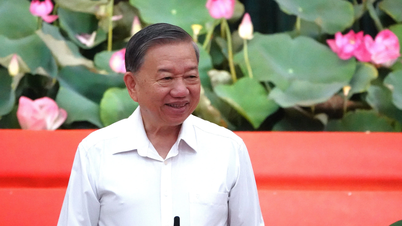

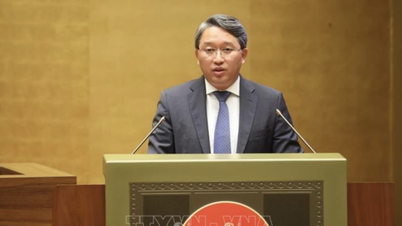










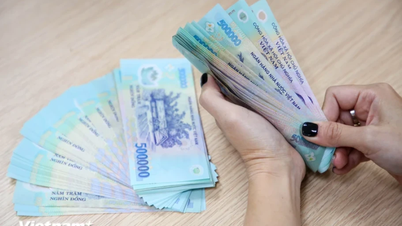




















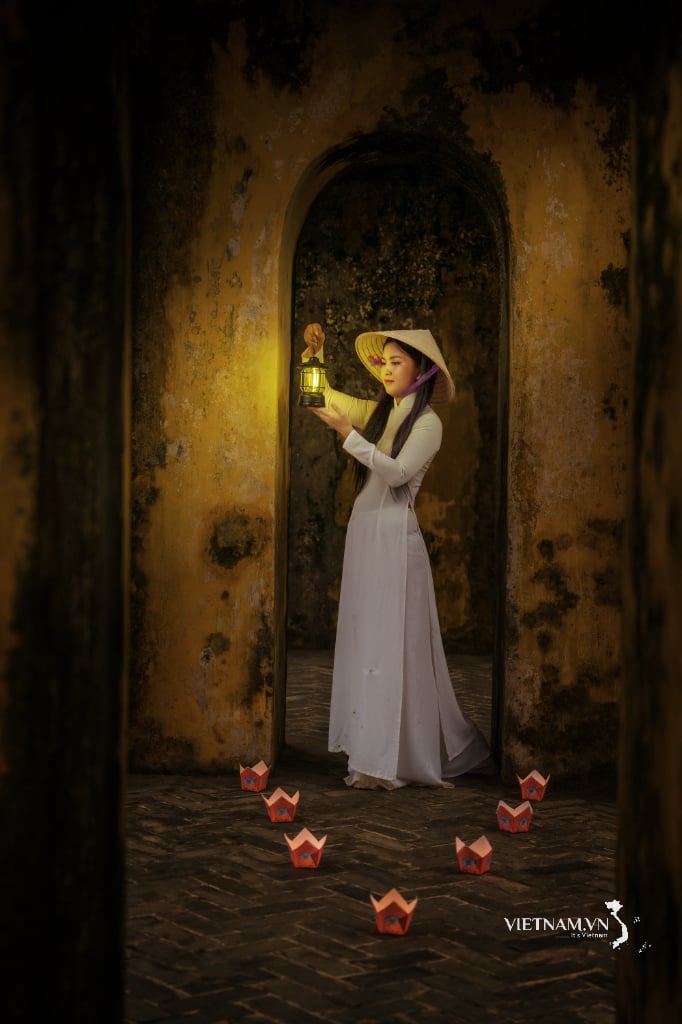


Comment (0)